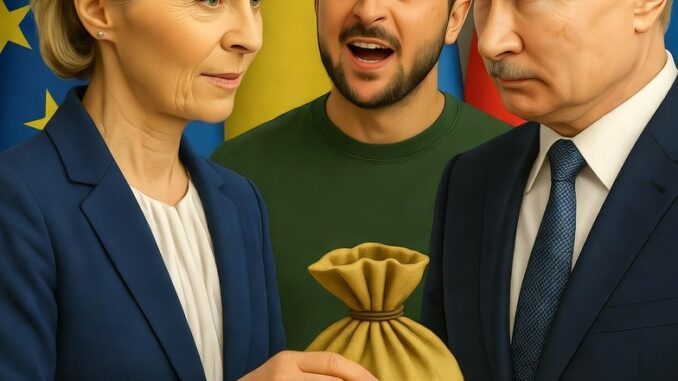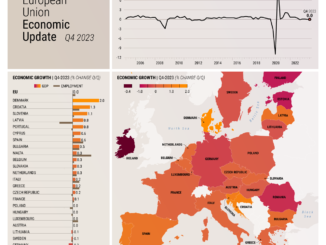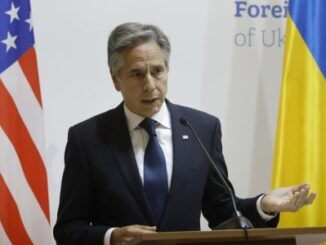
In the high-stakes game of geopolitical chess, the European Union is once again flirting with a bold—and potentially explosive—move: leveraging hundreds of billions in frozen Russian assets to bankroll Ukraine’s defense and reconstruction. At a summit in Brussels earlier this week, EU leaders punted on a final decision, deferring it to December while tasking the European Commission with fleshing out a €140 billion ($152 billion) loan program secured against Russia’s immobilized central bank reserves.
This isn’t outright theft, they insist—more like a collateralized IOU, repayable only if Moscow coughs up war reparations. But with Russia’s economy increasingly weaponized through energy exports, the ripple effects could jolt global oil and gas markets in ways the EU might bitterly regret. As one Belgian official put it, the bloc is “not ready” for this unprecedented raid, hinting at the legal, financial, and retaliatory minefield ahead.
The Frozen Fortune: What Exactly Is on the Table?
When Russia invaded Ukraine in February 2022, Western nations swiftly froze roughly $300 billion in assets belonging to the Russian Central Bank (RCB)—the lifeblood of Moscow’s financial stability. Of this haul, about €210 billion ($230 billion) sits in the EU, predominantly in Belgium’s Euroclear clearinghouse, a neutral custodian for global securities.
These aren’t oligarch yachts or shadowy oligarch accounts; they’re sovereign reserves—low-risk bonds, cash equivalents, and other instruments meant to back the ruble and fund imports, including critical energy infrastructure. The EU’s eyeing not the principal, but the windfall profits these assets generate. Euroclear alone has raked in €4-5 billion annually in interest since the freeze, with the bloc already siphoning off €1.5 billion this year for Ukraine aid.
The grander scheme? A multi-year loan to Kyiv, potentially totaling €140 billion over three years, where the frozen assets serve as unbreakable collateral. If Russia pays reparations post-war (a big if), the loans get repaid from those funds. Otherwise? The assets could be liquidated to cover the debt—a de facto confiscation that skirts direct seizure but smells like one to Moscow.
Proponents, including EU foreign affairs chief Hadja Lahbib, call it a “matter of time” before these funds flow to Ukraine, framing it as justice for Russia’s aggression.
But the delay underscores fractures: Hungary’s Viktor Orbán, ever the spoiler, balked at the plan, while financial heavyweights like Germany worry about blowback.
And in a twist, the U.S. is cheering from the sidelines, even floating the idea of using the loot to buy American weapons for Kyiv.
Energy Ties: Russia’s Frozen Assets Fuel a High-Octane Standoff
For an energy-focused lens, these assets aren’t abstract numbers—they’re tied to the arteries of global supply. Russia’s RCB reserves were built on decades of oil and gas windfalls, funding everything from Arctic LNG projects to shadow tanker fleets that evade sanctions. Seizing them could supercharge Ukraine’s war machine, buying drones, artillery, and even energy infrastructure rebuilds. But Moscow’s response? Expect it to hit where it hurts: Europe’s energy underbelly. Russia has already slashed pipeline gas to the EU to near-zero, forcing a scramble for LNG from Qatar and the U.S., which has inflated bills and sparked industrial shutdowns. If the EU greenlights this asset grab, Putin could escalate: targeting remaining Russian oil exports via “retaliatory” measures, like dumping discounted crude on Asian markets to crash prices, or accelerating cyberattacks on European grids—as seen in past hybrid warfare.
Recent U.S. sanctions threats on Russia’s banking and energy sectors only heighten the stakes, potentially squeezing the Kremlin’s ability to finance its fossil fuel empire while inviting tit-for-tat on frozen EU holdings in Russia (estimated at €20-30 billion).
reuters.com
|
Potential Energy Repercussions of EU Asset Seizure
|
Description
|
Impact on EU Energy Security
|
|---|---|---|
|
Russian Export Disruptions
|
Moscow could halt “friendly” oil/gas flows to non-Western buyers, flooding markets and depressing prices.
|
Lower global prices help importers but hurt EU producers; volatility spikes.
|
|
Sanctions Escalation
|
Fresh U.S./EU penalties on Russian banks could freeze energy trade financing.
|
Delays in LNG/oil payments; shadow fleet growth evades but raises insurance costs.
|
|
Infrastructure Retaliation
|
Cyber or hybrid attacks on pipelines/grids, as hinted in recent Arctic naval buildups.
|
Short-term blackouts; long-term € billions in repairs.
|
|
Market Confidence Erosion
|
Non-Western nations (e.g., India, China) pull reserves from EU banks fearing similar freezes.
|
Reduced foreign investment in EU green energy transitions.
|
(Data synthesized from EU reports and analyst projections).
The Backlash Blueprint: Why This Could Blow Up
The plan’s architects swear it’s legally bulletproof—framed as a “reparations bridge” under international law, not expropriation.
But skeptics, including the European Parliament’s own briefings, warn of a Pandora’s box: lawsuits at The Hague, where Russia could cry sovereign immunity, and a chilling effect on global finance.
Confiscation could erode the “sanctity of property” that makes Euroclear a trusted hub, scaring off investors from Beijing to Brasília. As one analysis notes, “the potential repercussions… could reach far beyond Europe—and erode the trust that underpins global finance.”
Geopolitically, it’s a red rag to Putin. Russia has vowed “mirror measures,” eyeing € hundreds of billions in Western assets it holds.
In energy terms, this means weaponizing the last levers: withholding rare earths for batteries or ramping up OPEC+ cuts to spike Brent crude toward $100/barrel. Domestically, EU divisions could fracture further—Belgium’s already demanding shared risks, while energy-dependent nations like Germany fret over blackouts.
Critics like Bruegel think tank argue outright grabs are a “mistake,” preferring the safer route of interest-only skim.
Even on X, voices decry it as “legalized theft,” warning the EU risks becoming a “financial pariah” overnight.
A Risky Bet: Justice or Just the Spark for Chaos?
The EU’s frozen-asset gambit is a desperate pivot in a war that’s drained treasuries and upended energy flows. It could arm Ukraine for victory, channeling Russian rubles into Western weapons and renewables.
But as December looms, the cracks are showing: internal hesitancy, Russian saber-rattling, and the ghost of financial Armageddon. In an era where energy is the ultimate currency, this “loan” might just ignite a broader conflagration—proving that in geopolitics, nothing works out quite as planned.
Follow Energy News Beat for the latest on how global conflicts reshape oil, gas, and power markets.
Got Questions on investing in oil and gas? Or do you have a Tax Burden in 2025?
Crude Oil, LNG, Jet Fuel price quote
ENB Top News
ENB
Energy Dashboard
ENB Podcast
ENB Substack






